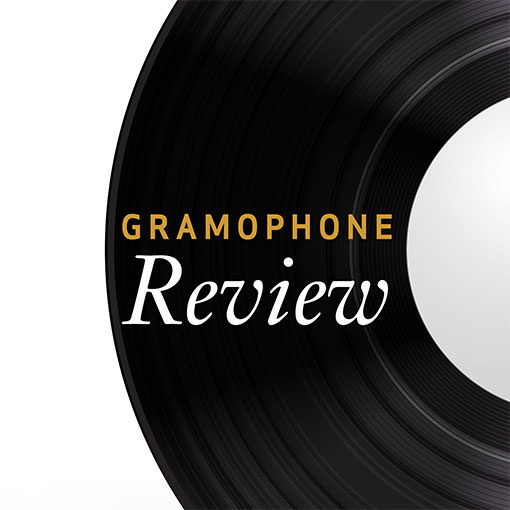Brahms Orchestral Works
View record and artist detailsRecord and Artist Details
Composer or Director: Johannes Brahms
Label: Philips
Magazine Review Date: 2/1992
Media Format: CD or Download
Media Runtime: 50
Mastering:
DDD
Catalogue Number: 432 121-2PH

Tracks:
| Composition | Artist Credit |
|---|---|
| Symphony No. 1 |
Johannes Brahms, Composer
Johannes Brahms, Composer Saito Kinen Orchestra Seiji Ozawa, Conductor |
| (21) Hungarian Dances, Movement: G minor (orch Brahms) |
Johannes Brahms, Composer
Johannes Brahms, Composer Saito Kinen Orchestra Seiji Ozawa, Conductor |
| (21) Hungarian Dances, Movement: F (orch Brahms) |
Johannes Brahms, Composer
Johannes Brahms, Composer Saito Kinen Orchestra Seiji Ozawa, Conductor |
Author:
Sawallisch conducts a middle-of-the-road account of the First Symphony, in which there are some tempo fluctuations in the first movement but nothing to disturb or offend. The performance would give pleasure in its sensible, Boultish, objective manner if it were not for the fact that the playing is so dull. There is no strong sense of symphonic argument, no revelation of any large-scale structure. Everything seems episodic because there is no tension, no rhythmic vitality. The first movement tempo fluctuations are of a kind which slow and weigh down progress which is already somewhat laboured. The middle movements are tamely played and featureless, and even the beginning of the finale has no sense of expectation or drama. In the main part of the last movement there is no feeling of developing strength, no inexorable progress to the coda, which here sounds flat and routine.
The LPO play accurately but in a quite uninspired fashion throughout. In the Schicksalslied there is a little more energy and uplift, particularly in the work's middle section, but nothing to grip or inspire the imagination, despite a very good contribution from the Ambrosian Singers. I would add that throughout the symphony there is a lack of presence in the sound, but matters improve in the choral piece.
When I reviewed Ozawa and the Saito Kinen Orchestra in Brahms's Fourth Symphony (10/90) it seemed to me that a good, straightforward account of the work was enhanced by a particular vitality in the playing, as of a special occasion, which as the orchestra's first recording it indeed was. Now I rather feel that although the orchestra still exists for only a brief period each year it has somehow settled down. It plays superbly throughout the First, although the players no longer seem on the edge of their seats, and there isn't the same frisson. Nor is the recording ideal, for the upper strings are backwardly balanced in the sound-picture.
As in the Fourth Ozawa doesn't aim for the stars but produces a good, workmanlike account of the First. The first movement is well-shaped, and there is a sense of momentum which is missing from Sawallisch's performance. The Andante is satisfyingly played, too, and the third movement is pointed quite strongly, with an attractive rhythmic lift. There is nothing in the finale to overwhelm and inspire, but the conducting is rather more than routine.
Neither of these performances lives in the same exalted world as Toscanini (RCA), but if slightly dated mono sound is not acceptable, then Klemperer's tough, compelling performance on EMI is a good second bet. Boult's wise, objective reading (also EMI) has softer edges, but still offers deep rewards.'
The LPO play accurately but in a quite uninspired fashion throughout. In the Schicksalslied there is a little more energy and uplift, particularly in the work's middle section, but nothing to grip or inspire the imagination, despite a very good contribution from the Ambrosian Singers. I would add that throughout the symphony there is a lack of presence in the sound, but matters improve in the choral piece.
When I reviewed Ozawa and the Saito Kinen Orchestra in Brahms's Fourth Symphony (10/90) it seemed to me that a good, straightforward account of the work was enhanced by a particular vitality in the playing, as of a special occasion, which as the orchestra's first recording it indeed was. Now I rather feel that although the orchestra still exists for only a brief period each year it has somehow settled down. It plays superbly throughout the First, although the players no longer seem on the edge of their seats, and there isn't the same frisson. Nor is the recording ideal, for the upper strings are backwardly balanced in the sound-picture.
As in the Fourth Ozawa doesn't aim for the stars but produces a good, workmanlike account of the First. The first movement is well-shaped, and there is a sense of momentum which is missing from Sawallisch's performance. The Andante is satisfyingly played, too, and the third movement is pointed quite strongly, with an attractive rhythmic lift. There is nothing in the finale to overwhelm and inspire, but the conducting is rather more than routine.
Neither of these performances lives in the same exalted world as Toscanini (RCA), but if slightly dated mono sound is not acceptable, then Klemperer's tough, compelling performance on EMI is a good second bet. Boult's wise, objective reading (also EMI) has softer edges, but still offers deep rewards.'
Discover the world's largest classical music catalogue with Presto Music.

Gramophone Digital Club
- Digital Edition
- Digital Archive
- Reviews Database
- Full website access
From £8.75 / month
Subscribe
Gramophone Full Club
- Print Edition
- Digital Edition
- Digital Archive
- Reviews Database
- Full website access
From £11.00 / month
Subscribe
If you are a library, university or other organisation that would be interested in an institutional subscription to Gramophone please click here for further information.





